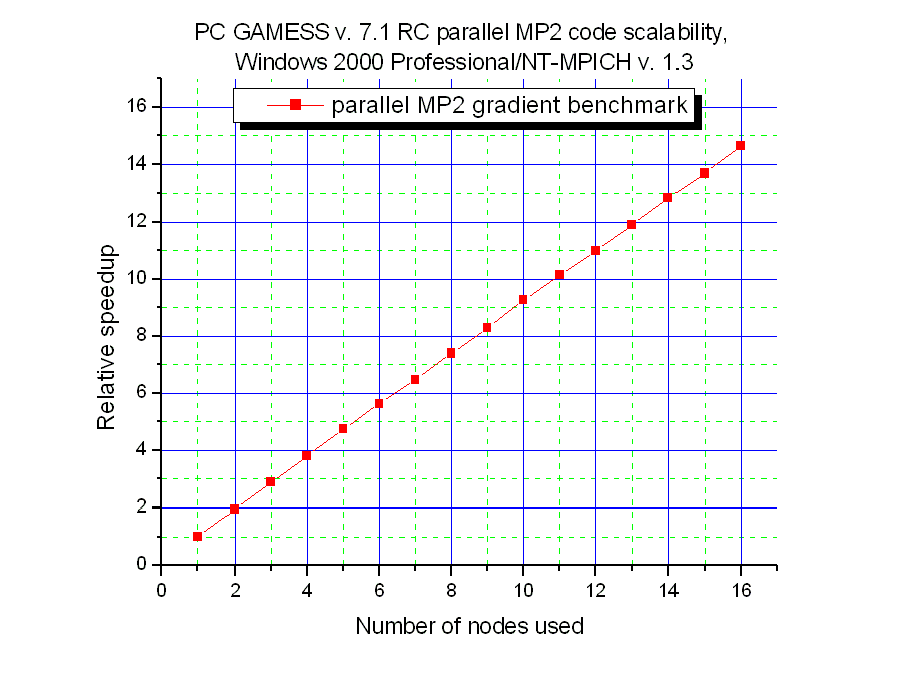Graphical representation of scalability

|
Number of nodes used |
Wall clock time (seconds), average CPU utilization, and relative speedup |
|
1 |
28700.9 89.18% 1.00 |
|
2 |
14684.1 88.47% 1.95 |
|
3 |
9962.0 87.48% 2.88 |
|
4 |
7541.3 86.97% 3.81 |
|
5 |
6060.6 86.72% 4.74 |
|
6 |
5089.8 86.25% 5.64 |
|
7 |
4431.5 85.06% 6.48 |
|
8 |
3877.8 85.18% 7.40 |
|
9 |
3457.9 85.07% 8.30 |
|
10 |
3095.6 85.62% 9.27 |
|
11 |
2828.5 85.45% 10.15 |
|
12 |
2611.3 84.92% 10.99 |
|
13 |
2410.1 85.02% 11.91 |
|
14 |
2232.0 85.32% 12.86 |
|
15 |
2092.8 85.08% 13.71 |
|
16 |
1960.2 85.31% 14.64 |

Intel Pentium 4 C, 2.4 GHz, hyperthreading disabled in BIOS, Intel's 865 chipset based desktop board, 1 GB DDR 400 RAM (2x512 MB DIMMs, dual channel), 120 GB SATA HDD (Seagate), 16 nodes, interconnect: Intel Pro/1000 CT integrated Gigabit Ethernet adapter, 3COM 3C16478 Gigabit 16-port unmanaged switch, NT-MPICH version 1.3, Windows 2000 Professional SP 4
Test 7, single-point direct MP2 gradient for medium-size system (623 basis functions, 53 frozen core MOs, 56 active occupied MOs, 514 virtual MOs). View image
All tests were run in standard parallel mode using dynamic load balancing and communications over extended p2p interface. Wall clock times are given on master node in seconds. Input file can be found here.
Copyright © 2007 by Alex A. Granovsky
Press to visit PC GAMESS v. 7.1 MP2 gradient code benchmarks on Woodcrest-based Windows system page
Press to visit PC GAMESS' eight core systems performance comparison page
Press to visit PC GAMESS' Woodcrest vs. Opteron performance comparison page